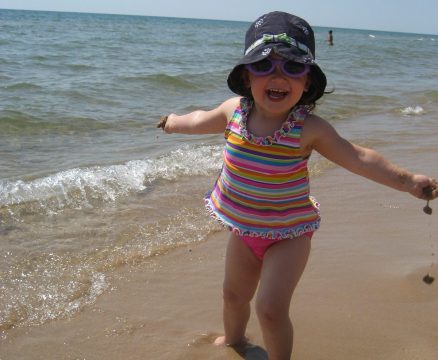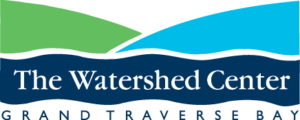bacteria source tracking

Finding the source of bacteria at local beaches.
To reduce the threats to public health due to elevated bacteria levels, it is essential to know the source of bacterial contamination so proper steps can be taken to lower the inputs. Since 2022, we have analyzed water samples from public Great Lakes beaches in the Grand Traverse Bay region for potential sources of bacterial contamination. This process, called microbial source tracking, uses advanced testing methods looking for host-specific genetic markers. Currently, microbial source tracking markers have been identified for humans, cows, pigs, canines (dogs, foxes, and coyotes), and gulls. Reliable markers have not been developed for ducks and Canada geese, which are potential additional sources of bacteria at beaches.
Microbial source tracking at beaches is a crucial first step in determining the sources of bacterial contamination because once contamination sources have been identified, appropriate remediation efforts can be implemented. This will lead to diminishing E. coli levels, fewer beach closings and public health advisories, and reduced threats to human health.
2022 Results
Gull and canine markers were the most frequently found sources and were present in nearly all 20 samples tested. Pig and human markers were found in less than half of the samples (40% and 30%, respectively) and at barely detectable levels, white the cow marker was nearly non-existent.
2023 results
The gull marker was by far the most frequently found (89% of the samples) while the canine marker was also present (13% of the samples). The rest of the markers tested were virtually non-existent, with levels barely above the detection limit when present. A total of 38 samples were analyzed.
2024 results
A delayed start to our source tracking program resulted in only 19 samples analyzed this year. Again, the gull marker was the most frequently found (74% of the samples). The other markers were found sporadically – pig 20%, canine 16%, human 10%, and cow 10% of the samples.
2025 results
In progress.
Human Sources
When human markers are found, it could indicate potential leaks in sanitary wastewater systems or individual septic systems. Results from this source tracking study do not indicate widespread human sources of contamination at the beaches tested.
This suggests that most of the elevated bacteria levels at beaches in the Grand Traverse region come from other animal sources. Additionally, these results lead us to believe these animal sources do not include cows or pigs, which are related to agricultural activities.
